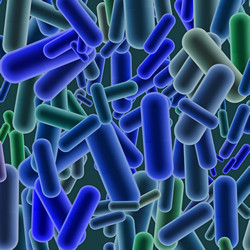Molecular biomarkers for listeriosis
Listeria monocytogenes is one of the most important food pathogens associated with high rates of mortality. The emerging need for minimally processed foods has altered food-processing methods and highlighted the pathogenic nature of L. monocytogenes. Intriguingly, the relative virulence of individual L. monocytogenes isolates can vary substantially but the genetic basis underlying these differences is not yet understood. The primary objective of the EU-funded LISGENOMICS (Study of the Listeria monocytogenes gene expression profile in ready-to-eat foods of animal origin by the application of the omics and the bioinformatics/biostatistics disciplines) project was to develop methods for understanding the behaviour of the foodborne pathogen Listeria. The consortium worked under the hypothesis that virulence differences among strains could be due to different gene expression patterns. The ability to promptly determine the pathogenic potential of L. monocytogenes strains is vital for the control and prevention of listeriosis. LISGENOMICS investigated bacterial gene expression when inoculated in ready-to-eat foods of animal origin and after their passage through the gastrointestinal tract. The identification of molecular biomarkers to characterise the bacterial physiological state under specific conditions remains a key issue for food industry. The consortium combined phenotypic and genotypic data for biomarker discovery and elucidation of survival, stress adaptation and virulence mechanisms. Implementing this information into strategies for enhancing Listeria inactivation and practical tests that identify pathogens along the food chain will significantly improve public health. The identified biomarkers offer new perspectives for the prediction of bacterial behaviour and physiology. Incorporation of this data into mathematical models will help predict pathogen inactivation and become invaluable during industrial processes for food safety and quality management. Overall, the combination of molecular tools and predictive microbiology opens new roads for food formulation and preservation optimisation.







